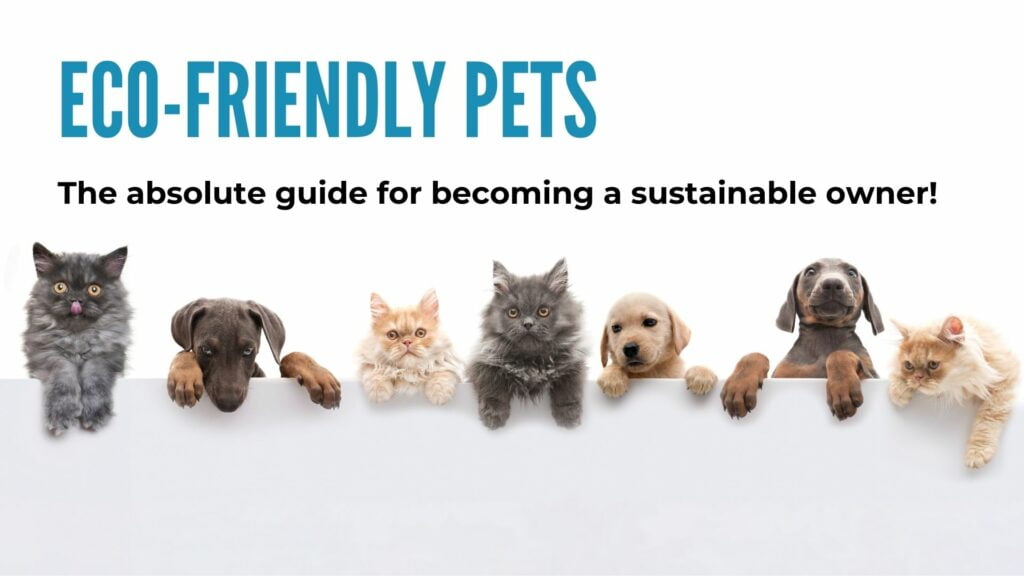Any animal lover will undoubtedly say that pets are a great source of happiness and fulfillment in our daily lives. Dogs and cats have been keeping us company since immemorial times, and with the recent Coronavirus pandemic we have renewed our appreciation for our furry friends! In recent years there has been a radical cultural shift regarding pets on a global scale, now pet owners are willing to spend more money and to provide their dogs and cats with much more amenities than what was considered normal or necessary in previous years. Now it is all about pampering them as much as possible, a proof of this is the recent meteoric growth of the pet industry which is one of the fastest-growing markets nowadays, with a total worth of $261 billion dollars in 2022, and expected to grow by 4% in Europe in 2027. Within this market there is a dizzying and growing diversity of products and services: ranging from organic raw food, smart feeders, GPS collars, CBD treatments, pet insurance, clothing, grooming, pet cameras, and many more. The bad news is that most of these products and services have quite a negative environmental impact: just in Europe the population of dogs and cats kept as pets goes up to 200 million (and it is likely to be larger), so the overall impact of waste, consumption and carbon emissions is significant. We know, it is hard to believe such cuties are able to have a negative impact on the planet when they seem to be the only ones capable of brightening up our days! But, there’s no need to panic, it is actually possible to enjoy your doggie or kitty while battling climate change at the same time. We have done all the research for you and we have gathered all the useful tips you need for transforming your pets into eco-friendly allies! Just by changing a few lifestyle habits you can make a huge environmental impact.
Pets, sustainable or not?
In brief, at the moment the pet industry is far from being sustainable. Even though the cuteness of dogs and cats make it difficult to visualize it, there are many problems with how we feed our pets, how we manage their waste and the sort of products we buy for them. We have categorized the individual issues in two categories for you to consider them individually:
Pet food: a significant carbon „pawprint“
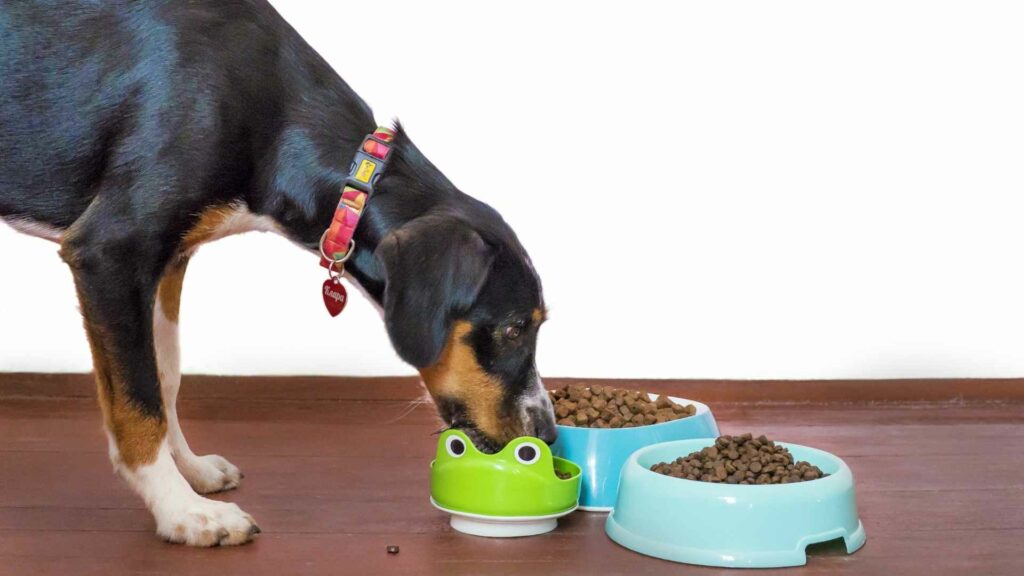
We have all heard that we should be reducing the amount of meat that we consume in our diets, right? Plant-based, vegetarian and vegan alternatives are considered to be excellent options for reducing our environmental impact through our food choices. However, what humans are stopping to consume is now being eaten by our kitties and puppies:
- A huge appetite: In the United States almost one quarter of meat production is related to pet food. Worldwide, pets consume around 20% of the total production of meat and fish. In order to produce this amount of food an area twice the size of the UK is needed to meet this sort of demand.
- A big carbon „pawprint“:If all the pets in the world were a country by themselves, they would be the 6th country with the largest carbon emissions in the world, surpassing most European countries! A medium-size dog has a similar carbon footprint to a large SUV. This is mostly because of the way in which resources are used by pet food manufacturers, an industry that so far had escaped the sustainability radar. Luckily, eco-friendly options are recently becoming abundant and gaining visibility.
- More meat means less forests: Taking care of cattle and processing meat involves using land and water. This is also related to deforestation because of the huge amounts of grains that are required to feed livestock. So making pet food is leading to destroy forest areas around the world.
Toys and accessories: plastic waste
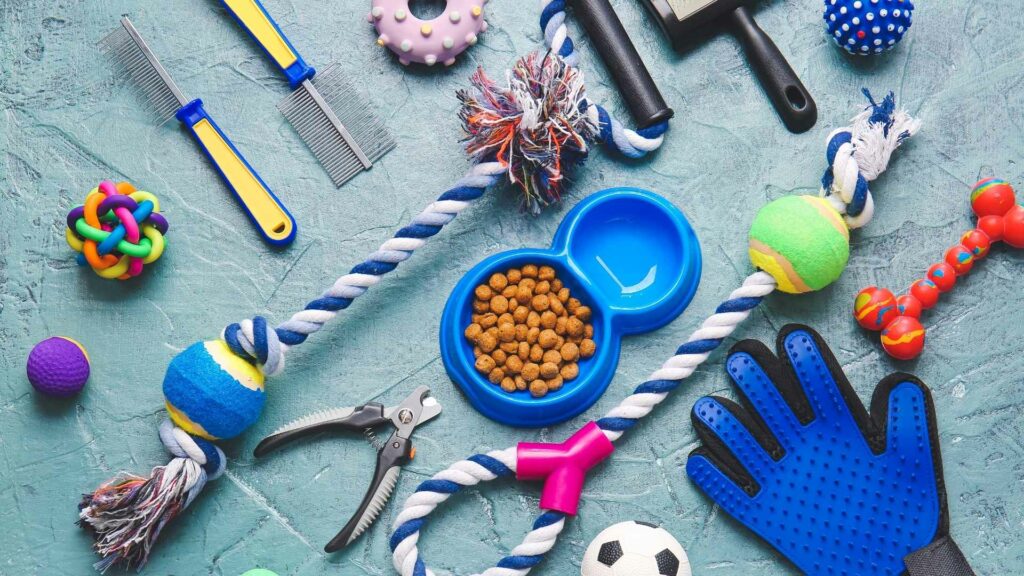
If you visit your local pet store, you will find countless shiny, colorful and cute products. However, we should ask ourselves: How are these products made? How much time will they remain useful before throwing them away? Well, the answer to the first question will mostly be PLASTIC and about their useful lifetime, depending on your pet’s energy level, maybe just a couple of months. So here are the issues regarding our best friend’s playthings:
- Plastic, plastic and more plastic: Most of the toys, clothing and accessories that are available in pet stores are made from plastic, synthetic fibers and other materials sourced form fossil fuels, all of these are not biodegradable, they shed microplastics and end up in landfills or in the ocean.
- Un-recyclable: They are pretty much impossible to recycle! Have you seen how a ball or a stuffed animal ends up after a couple of months of playtime with a dog? They should be considered as single-use plastic products.
- Toxic fun: The other downside is that plastic toys could affect your dog’s health, harmful chemicals have been found in these products, and also the accidental swallowing of plastic fragments can affect both digestive and reproductive functions.
10 tips and ideas for making your pets eco-friendly
Below you will find ideas and tips that will be useful for both dog and cat owners, you will see that it is nothing impossible to do,
- Adopt, don’t shop: It is always better to adopt rather than to buy dogs or cats from a breeder. Only in the European Union there are at least 100 million stray dogs and cats. Pedigree breeding is problematic because it requires a lot of resources and some of the animals have underlying health issues.
- Think about the size of your new dog: When adopting a dog, it is better to get a small or medium-sized dog since they eat less food. The difference in carbon footprint is radical. A medium size dog emits 770 kg of CO2 a year, while bigger dogs can emit up to 2,500 kgs of CO2 per year.
- One is better than many: If possible, just keep one pet per household, this would reduce significantly the amount of waste produced. This will also allow you to give better care and attention to your dog or cat!

- Bulk is better for the planet: Packaging is the main source of plastic waste when it comes to pet feeding. If possible, buy dry food in bulk and store it in your own containers. If buying bulk is not an option for you, purchase the largest package possible, this will reduce the amount of waste and it is usually more cost-effective.
- Get your upcycling creativity run free: There are TONS of ideas for making DIY toys for dogs and cats with things that you don’t need anymore. Old t-shirts and sweatpants can be transformed into rope toys; and that Amazon cardboard box can become your cat’s new favorite toy!
- Don’t let your pet go overweight: Keep a track on your pet’s weight: according to vets, pet owners tend to overfeed their pets, not only this can cause obesity and health problems but it also entails a higher consumption of resources and food. Between 22% and 44% of pets are considered to be obese worldwide and this rate is growing.
- Your leftovers can be turned into treats: Instead of treats or wet food, which are packed individually in plastic most of the times, talk to your vet and ask what sort of “human food” can be given to your pets. Most of the time, leftovers can be repurposed and both dogs and cats can enjoy them! If you enjoy baking you can even make your own dog and cat treats at home with simple ingredients (no need of anything fancy).

- Visit your local butcher: Ask your local butcher or meat shop for byproducts from chicken or rabbit. “Human grade” food such as beef, fish or pork is not necessary for pets and producing this sort of food has a huge environmental impact. It is better to buy local products rather than purchasing specialized food that has to be flown from remote parts of the world.
- Say „no“ to plastic: Avoid buying feeders, water bowls, litter scoops or grooming products made from plastic. Go for anything that is made with ceramics or metal, although these are more pricey they last for a longer period of time!
- Natural fibers are the way to go: Buy leashes, collars and harnesses that are made with natural fibers, avoid anything synthetic or with plastic.
Advice for dog lovers:

- Don’t use plastic potty bags: Use biodegradable bags for picking up your dog’s waste (anything that says compostable should be fine!). Other option is to use cardboard, newspapers and other paper waste. Since an average dog can produce up to 125 kilograms of poo per year, using regular plastic for cleaning up would be an extremely bad thing for the planet.
- Composting dog waste is not an easy game: even though the bags are branded as „compostable“ this doesn’t mean you should be adding your dog’s waste into your compost bin. Composting animal waste requires different processing and specific materials because dog feces carry different pathogens such as bacteria, viruses and parasites. Even when the process is over you shouldn’t use the compost mix in a food garden or in areas used by children.
- Dogs love the veggies: Even though cats are “obligate carnivores” and need meat to achieve a proper nutrition, dogs on the other hand can enjoy a diet based on vegetables and grains, you can ask your veterinarian about how this transition should be done and what brands of vegetarian dry food are ideal for your dog! Recent studies say that vegan diets for dogs are actually healthier and safer for them.
- Be sure your dog doesn’t disturbe wildlife: If you take your dog on a walk in a forest area or somewhere that is visited by local wildlife it is advisable to have them on a leash since they can disturb animals that live there.
- Try grooming at home: Instead of driving your pet to the groomer, try doing it at home. It is also advised to use eco-friendly products (environmentally friendly shampoo and grooming tools made with biodegradable materials such as wood, bamboo and natural fibers). Don’t use anything that contains synthetic colors, fragrances or irritant chemicals. Pre-bath brushing is also a great way to keep baths effective and fast.
Advice for cat lovers:
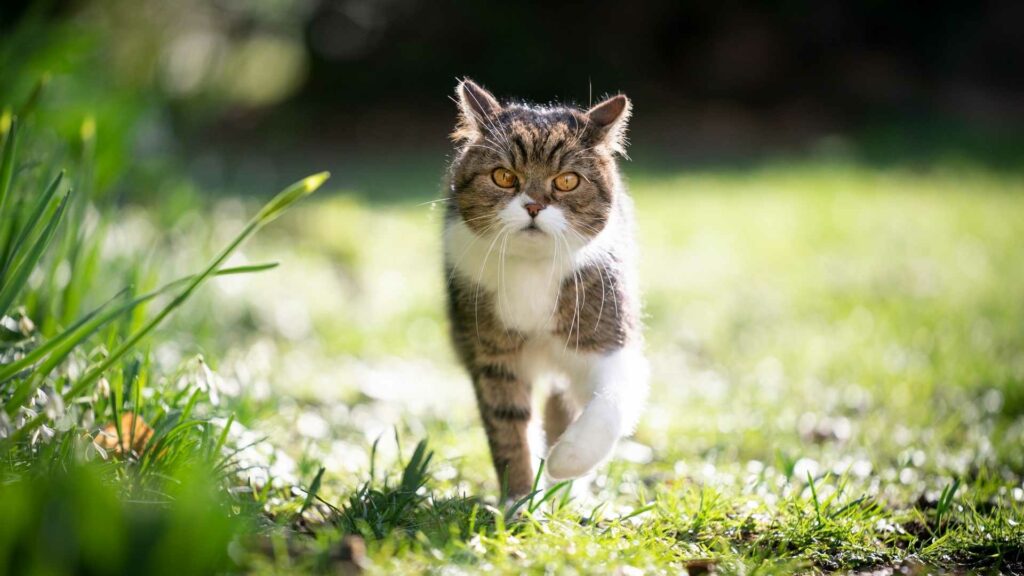
- Cute (and deadly): If you live in a place that is often visited by wildlife (specially birds and small mammals), avoid letting your cat outdoors. Cats are hunters by nature, and not every ecosystem is adapted to have new predators in the neighborhood. Wildlife and biodiversity worldwide have been impacted by the introduction of such domestic animals. Island countries such as Australia and New Zealand are particularly vulnerable to this. Cats have been related to the extinction of over 63 species of endemic animals.
- DIY scratchers: Buy scratchers made from carboard, these are biodegradable! You can also upcycle carpet and rope scraps for making your own DIY scratchers, you can even find these materials for free in your local textile store.
- Eco-friendly litter options: Use eco-friendly litter, look for products made with the following biodegradable materials: corn-based, walnut shells, wood-based, bamboo, wheat, coconut or grass. Depending on your needs you can choose between clumping or non-clumping litter, multi-cat or with odor control. Only in the UK 2.4 million tons of cat litter goes into landfills every year.
- If it’s dusty, it’s toxic: Avoid using litter made from clay or silica, these materials have to be mined and this involves removal of trees and triggers erosion. Clay also produces dust which can have negative effects in the lungs.
- Don’t flush cat waste: The toilet is definitely not a good place for disposing cat litter or cat waste. This can contaminate your local water treatment plants. This sort of waste should never be added to a compost bin either. The best way to dispose this is to place it in a biodegradable bag and place it in the correct waste bin according to your local regulations (be sure to ask first!).

Extra thoughts :
- Don’t buy exotic pets: Despite they can be extremely beautiful, exotic animals should be avoided altogether. By nature, this kind of animals are not adapted to human interaction and to live within an enclosed environment. Taking care of them often involves special diets, expensive equipment and maintenance. These animals can carry diseases that can become serious health risks to humans. A very important risk to consider is that exotic pets can easily become invasive species if they escape or if they are abandoned by their owners when they have problems with them. This can unchain a situation of ecological unbalance, such as the threat of Burmese Phyton snakes in Florida which are killing native wildlife in the Everglades.
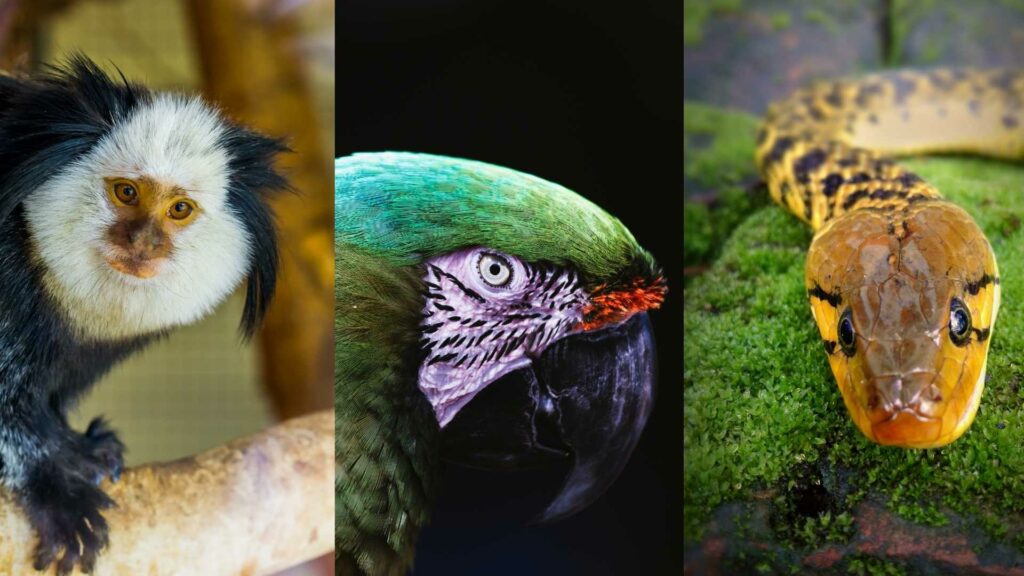
- Alternative and creative pet options: even though they don’t offer the same kind of interaction and company, there are other animals that have been domesticated and are easy to take care of and are not ecologically harmful. Rabbits, goats, chickens and ducks all have plant-based diets, their waste can be used as fertilizer, some of them have additional benefits such as chickens and ducks laying eggs; goats can even help you clear land and get rid of weeds in your garden! If you decide to adopt any of these animals make sure you do all the necessary research and that you have enough space in your home to give them proper care.
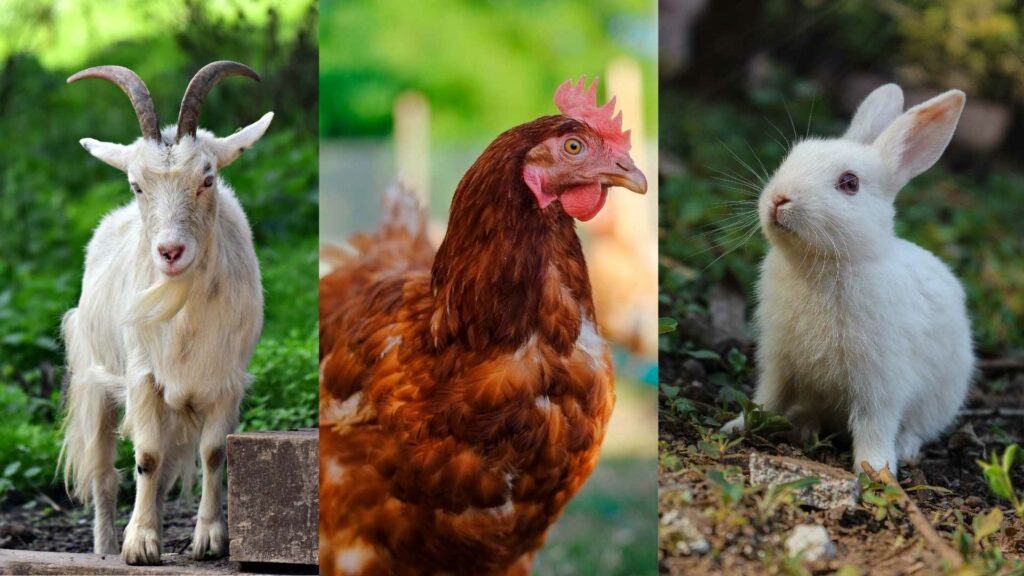
Conclusion
Even though this might seem a bit negative, pets also have a very positive impact in societies and we need to take that into account as well. Taking your dog for a walk is a healthy activity that can keep you from using your car and in that way reduce your carbon emissions. Cats are also known to have a positive effect in mental health, lowering stress and anxiety and even improving cardiovascular health. So, if you follow all these steps, you can simultaneously enjoy your pet’s company while taking care of the planet! Let us know if you have any additional ideas of how you can combine your pet ownership with a sustainable green lifestyle!
